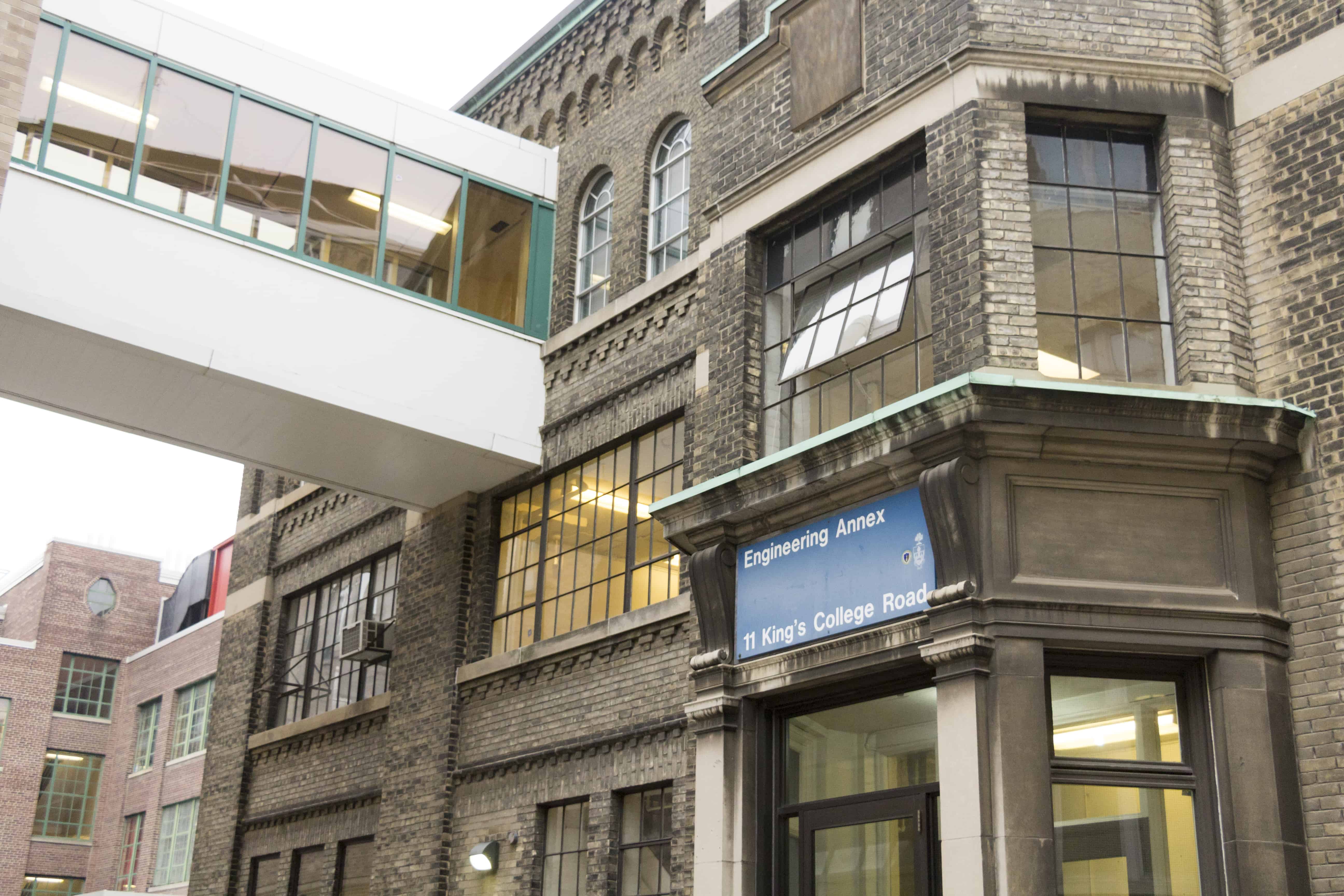The university’s annual report on deferred maintenance has been released, revealing that the total cost of repairs required by University of Toronto’s buildings is $552 million — up $34 million from last year.
The report, which will be presented to the university’s Business Board on Monday, concludes that, despite the rise, overall building condition has remained fairly stable over the past five years and will hopefully soon begin to improve. It adds that “[the financial] liability, however, will be with us for a very long time into the future.”
By the numbers
Home to many aging buildings, UTSG is responsible for the majority of the total cost, to the tune of $474 million.
It also has the worst overall ranking on the Faculty Condition Index (FCI). FCI scores are calculated by dividing the cost of deferred maintenance by the cost of replacing the building. The higher the percentage, the worse for the building or portfolio of buildings; anything over 10 per cent is considered “poor condition.”
Buildings at UTSG possess an FCI rating of 15 per cent, which is up from last year’s 14.4 per cent. Out of the campus’ 109 buildings, 73 are classified as in poor condition.
The university as a whole has an FCI rating of 14 per cent, which is up from 13.4 per cent last year. In 2015, the average score for Ontario universities was 11 per cent.
Though UTM and UTSC are doing comparatively well, with FCI scores of 7.9 per cent and 11.9 per cent, respectively, they are facing their own struggles. UTM’s total deferred maintenance has risen $6.4 million from last year, lifting their FCI from last year’s 6.5 per cent. UTSC’s overall FCI ranking has fallen — last year it was 13.5 per cent — but the total cost of needed repairs has risen by $2.3 million.
The deferred maintenance context
The report is not all bad news. Between provincial funding and internal budgeting, enough money is now being invested into U of T’s buildings to hold the deferred maintenance to its current levels and even improve them over time.
The report credits this achievement partly to the university’s policy of solving high-priority projects first.
For instance, though the total cost of deferred maintenance at UTSG has increased over the past five years, the number of priority one deficiencies, which require the highest priority repairs, has stayed fairly stable. The report also notes that $18 million of the growth in deferred maintenance costs were due to a re-assessment of the price of replacing windows, not new problems arising.
Building highlights
Sidney Smith Hall (UTSG)
When Sidney Smith Hall was built in the 1960s, its chunky, brutalist architecture was intended to give the campus a more modern feel. Today, its has a total deferred maintenance price tag of $31,905,991, almost half — 49.6 per cent — of the cost to replace the building. Though it was projected to be audited in 2015, its most recent audit occurred during the 2010–2011 academic year.
Science Wing (UTSC)
The Science Wing’s deferred maintenance cost of $26,100,501 triples any other building’s maintenance price at UTSC. It has an FCI score of 18.2 per cent and is a substantial contributor to UTSC’s overall score of 11.9 per cent.
Kaneff Centre for Management and Social Science (UTM)
Though it is hardly responsible for the largest total dollar amount of deferred maintenance at UTM, the Kaneff Centre has by far the highest FCI score at 47.1 per cent. Its last audit was in 2012–2013, which was before it underwent construction to add the rotunda in 2014.
Ramsay Wright Physical Laboratories (UTSG)
The fact that Ramsay Wright carries $32,477,231 in deferred maintenance is not surprising, since the university has been renovating the sciences building since 2015. The sum represents 30.9 per cent of the laboratories’ replacement value and is due to be re-audited in 2018.
Dentistry (UTSG)
The building housing the Faculty of Dentistry requires $25,179,660 in deferred maintenance; this represents 23.1 per cent of its cost.


